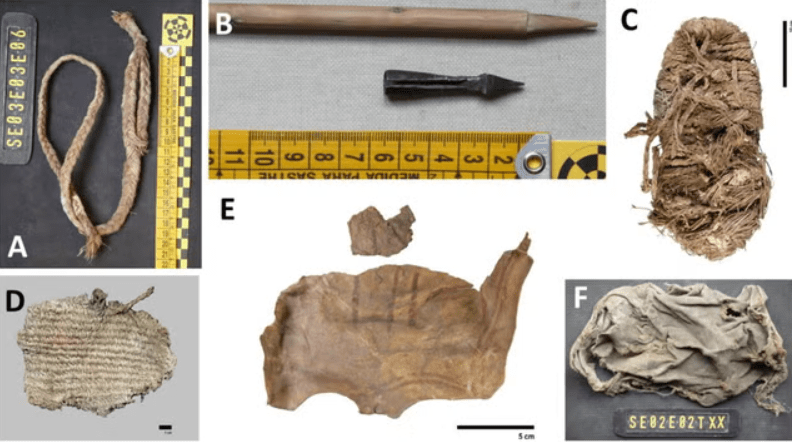An astonishing trove of medieval objects, some over 600 years old, has been unearthed in a series of long-abandoned bearded vulture nests nestled in the rugged cliffs of southern Spain.
Archaeologists, delving into these secluded nests, uncovered a wealth of preserved artefacts ranging from a crossbow bolt to a slingshot, sandals, and even ornately decorated leather.
Some pieces are believed to date as far back as 1375, offering a rare and remarkable glimpse into medieval life through the lens of bird behaviour.
600-year-old treasures uncovered in vulture nests
This unique discovery comes from a detailed study published in Ecology, where researchers revealed that a dozen vulture nests had safeguarded the items for centuries. The findings were nothing short of extraordinary.
“Thanks to the solidity of bearded vulture nest structures and their locations in the western Mediterranean, generally in protected places such as caves and rock shelters with relatively stable temperature and low humidity conditions, they have acted as natural museums, conserving historical material in good condition,” the study’s authors wrote.
The bearded vultures, once native to the region, have been extinct in the southern Spanish mountains for between 70 and 130 years.
However, their nesting grounds, often cliff caves and rocky shelters, have remained untouched, creating ideal conditions for preserving historical remnants.
What the Nests Revealed
Over 2,400 items were catalogued during the excavation. The breakdown is staggering:
- 2,117 bone remains
- 43 pieces of eggshell
- 25 artefacts crafted from esparto grass
- 86 hooves
- 72 fragments of leather
- 11 samples of animal hair
- 129 textile remnants
Among the most intriguing were shoes and slingshots made from esparto grass, a wooden lance, sheep leather adorned with decorative work, and woven fabrics, all materials used by humans centuries ago, now revealed through the scavenging habits of birds.
Archaeologists didn’t expect to find a medieval treasure trove in bird nests.
But the abandoned homes of bearded vultures in Spain have become accidental time capsules, revealing lost details of medieval daily life and offering a fresh path to understanding the past.
Human History Through Vulture Beaks
Interestingly, many of the artefacts echo those discovered across the Iberian Peninsula, suggesting a deep-rooted tradition of crafting tools and clothing from natural fibres, a practice dating back to the Epipaleolithic period, some 12,000 years ago.
“This basic historical data and that collected on feeding habits and nest-site selection provide quality information on the habitat characteristics and food species’ selection of this species several centuries ago,” the authors noted.
Such insights help archaeologists trace not just the evolution of technology and craftsmanship, but also human interaction with the environment over millennia.
Reviving a Vanishing Species
Today, the bearded vulture is the most endangered vulture species in Europe, with only 309 known breeding pairs left.
The Vulture Conservation Foundation blames “intense persecution” in the 19th and 20th centuries for their sharp decline.
But this new research may hold keys to their revival. Understanding where and how these birds once lived and what they scavenged could help conservationists pinpoint ideal habitats for future reintroductions.
“This information is of the utmost importance for the recovery of the species at the European level, regarding, for example, the species’ potential distribution and selection of suitable release sites, or to prioritise habitat conservation efforts.”
From Cliffside to Classroom
Beyond the conservation efforts, the discovery adds a rare archaeological layer to ornithological research.
These nests, once thought to be mere relics of extinct populations, now serve as silent, unintentional storytellers of human history.
With their resilience, isolation, and unique habit of collecting man-made objects, the bearded vultures have offered up a medieval mystery hidden in plain sight.
And now, researchers are just beginning to understand what else may lie beneath the feathers and stone.






